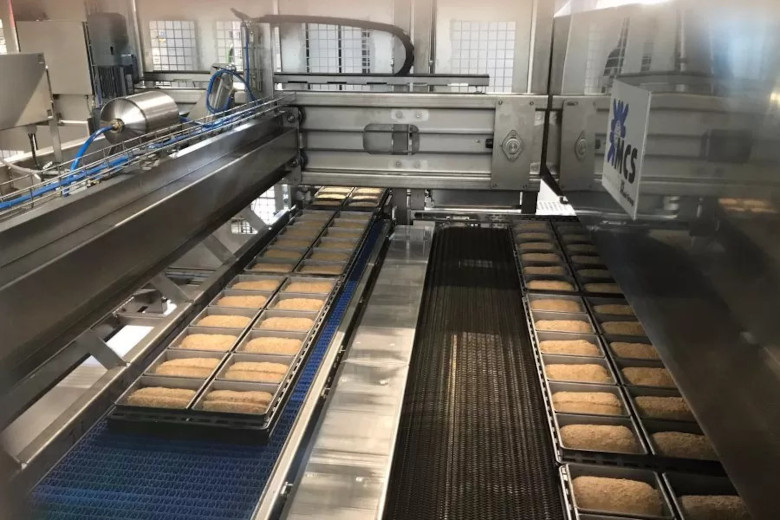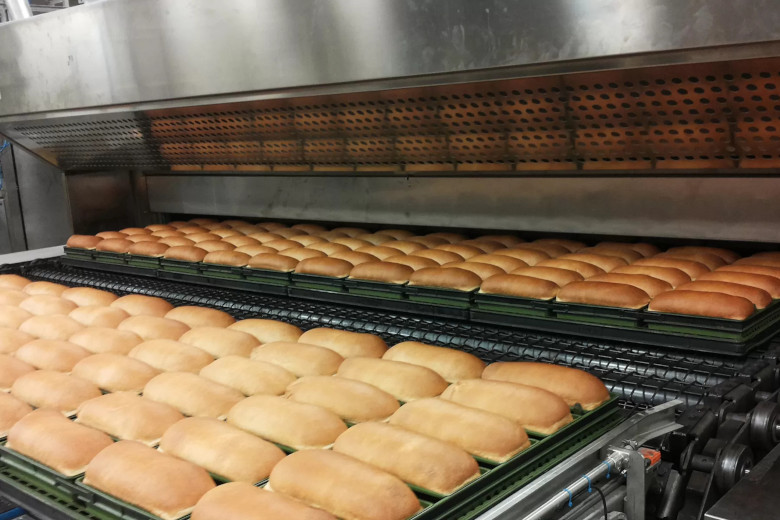
Energy consumption is undisputed at the top of the industry’s concerns and efforts for improvement. Royal Kaak recently launched a new service that closely investigates the energy-saving potential of an industrial oven, which can help lower energy consumption by up to 15%: the OvenScan, launched last year and introduced in the Benelux countries in 2023. The concept itself was an organic conclusion of its teams’ conversations with their customers. However, an exact definition of what energy saving entails is unique to each production environment, with numerous factors that can exert an influence on the savings potential. In this way, the exact solutions that are applicable to the respective environment can be identified. The OvenScan was Kaak’s answer to this equation, as it allows its specialists to quickly run a check and gain an informed understanding of where saving potential may be, in each circumstance. “What is the savings potential for each particular customer, with their particular product portfolio? This is very important to acknowledge before we even begin to discuss sustainability, hybrid technology, net-zero emissions, or energy savings,” underlines Paul Heijnen, Sales Director, Kaak. The starting point is a clear understanding of the current production baseline and of the products themselves. These will determine the potential of the solutions that are available on the market, to help achieve energy savings and reach sustainability goals. And this is what the OvenScan does.
This tool is applicable to all types of oven technologies, including tunnel ovens, either DGF, hybrid, or electricity-powered. The OvenScan provides insight into the current performance of the existing oven, an investigation performed by the bakers, with assistance from Kaak, if needed. It entails gathering a series of process measurements such as gas and steam usage, the type of gas and oven used, or temperatures, for example. In addition, it maps energy flows, linking each consumer inside the oven with its corresponding energy usage.
Product data is also included (production capacity, product weight, recipe, type of dough, etc.), as it also directly influences resource usage. At this stage, they fill in a checklist with the relevant values, which make up the basis of the OvenScan check. This input is delivered to Kaak’s energy balance oven simulation tool, which was developed over the last three to four years to combine physics and calculations with real-life data. Six years’ worth of extensive measurements were taken for the actual oven run data, which were used to validate their calculations and simulations. The result is the tool that compares the optimum performance data of the latest technology oven with the input from the facility, using the current performance data. “If there is a big difference between the two, that is the potential for savings,” Heijnen points out.
The OvenScan has already been finding big potential saving opportunities, of up to 40-50%. There are, of course, ovens that are already very close to the optimum operating performance, where potential gains only range around 5-10%. The next step can be fine-tuning the settings, a service Kaak also provides. Depending on the bakery’s efficiency and sustainability goal, changes can be made. Kaak can improve its existing oven by retrofitting several new technology solutions, including exhaust systems. “Extracting air from the baking chamber is the first process leading to energy loss if the process is not controlled,” Heijnen remarks. Steam use can also be massively improved, a very expensive medium to begin with. Ovens can easily use too much of it without strict control of the steam zone. Its goal is to ultimately create a condensation zone on the product, protecting it as it develops. “While, in the past, ovens were adjusted just by looking at the end product results, heating power consumed and steam usage were overlooked, when gas was a cheap resource. That is not so anymore; on the contrary, it is now the first place to look for energy savings,” Heijnen explains. Product quality and consumption are now equally important aspects. “Do I really need 200 kg of steam per hour for this product? This is exactly the kind of aspect where we can help. We did extensive research in the field so we know with certainty which products are baked with excellent results using only 50 kg/h – on the condition that the right temperature is reached in the steam zone, or that there are no flow disruptions,” he adds.
Insulation can also help save energy; in the next step after running an OvenScan diagnostic, Kaak can also make infra-red scans of the ovens to determine the exact spots where heat is lost and target them. The company also takes detailed measurements of the entire process and can determine the potential for improvements along each step, starting from deep inspection data findings.
Electrical baking
A logical step towards baking efficiency and net-zero emissions is baking with (green) electricity, in Kaak’s perspective, with the advantage that it is already a widely available resource everywhere in the world, with its own fully-developed technical solutions and infrastructure, as well as several ways of getting it from a renewable source. From the point of view of the baking process itself, it is also the best choice: “You can control with a very high degree of precision, you can achieve very balanced oven designs, it is easy to maintain, it doesn’t take up a lot of space – it is the perfect heat source for baking,” the specialist underlines. The only possible downside is the cost, which can deter its widespread adoption, and it often does. However, hybrid concepts are key here, combined with a gradual price decrease, which can be observed.
A hybrid solution in this direction can be implementing electrical heating elements in the oven, besides the gas burners, so both electricity and gas can be used depending on their availability and costs. To optimize consumption when using two different heat sources, one is fixed (for example, electricity is kept at a certain value) while the other is adjusted to follow the required baking curve (gas burner regulation). This setup is not only beneficial in cutting costs, but it also helps lower emissions and is available to retrofit into existing ovens, so the investment it requires is small. It does require more complex balancing, but this type of technology is already looking promising, especially a thermo-oil – heated with electricity – and gas combination running in parallel.
Read the full article, ‘Efficient baking assignment: tunnel ovens’ in Baking+Biscuit International, issue 5.
Photos: Royal Kaak



